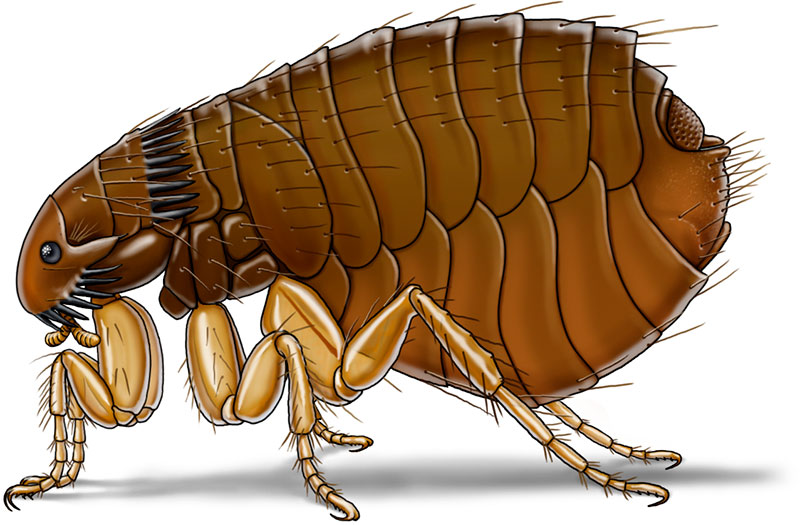Cat Flea

Order/family: Siphonaptera/Pulicidae
Scientific Name: Ctenocephalides felis (cat flea); Ctenocephalides canis (dog flea)
Description: Cat and dog fleas can be found in the same area and are very similar in appearance. They are small, 1/8” long, wingless, laterally flattened, and have piercing/sucking mouthparts. The flea has very well-developed legs allowing it to jump at least 6” straight up. Coloration is black to reddish brown. The body is covered with backward projecting spines which help it move between the hairs of host animals. The head of the female cat flea is twice as long as it is high; the head of the female dog flea is less than twice as long as it is high. Both cat and dog fleas have a row of very heavy spines on the front of the head and back part of the first body segment, the pronotal comb. Cat and dog flea larvae are 1/4” long when fully developed. They look much like fly maggots except for their well-developed heads. They have 13 dirty=white body segments with backward projecting hairs on each. They have a pair of hook-like appendages on the last abdominal segment.
